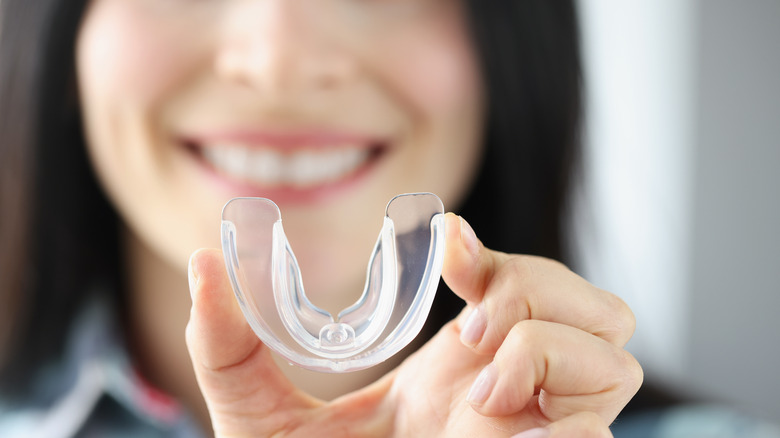If you’re one of the millions of individuals with nighttime bruxism, or clenching or grinding your teeth during your sleep, the last thing you need to feel is stressed about how to help it. The Washington Post states that up to 8% percent of adults exhibit signs of sleep bruxism. The causes of bruxism can vary greatly and include stress and other medical conditions such as sleep apnea. Likewise, the treatment options for your bruxism can include a combination of dental correction, stress management, behavior changes, and medications to help relax the jaw muscles, according to the Mayo Clinic. However, for many individuals, wearing a mouth guard at night can help to provide some protection from the damage caused by clenching and grinding during your sleep.
When it comes to night guards, there’s no shortage of options to choose from. But unless your dentist has made a recommendation, one of the first decisions you’ll need to make is what kind of night guard to use. Before you make your decision, you may want to consider some pros and cons of upper and lower night guards.
Upper or lower: which is better?

Experts seem divided on the issue. My Tooth Be Told recommends a lower night guard for teeth grinding, citing the reduced risk of triggering a gag reflex. Unlike an upper jaw night guard, a lower jaw night guard takes up less room in the mouth, which can allow for a more comfortable fitting guard. Additionally, lower guards are less likely to cause the lips to protrude, reducing the risk of the guard contributing to dry mouth symptoms. Lower night guards are also considered better for individuals who have been diagnosed with sleep apnea.
However, according to ProTeethGuard, some dentists may recommend an upper night guard as it’s sometimes viewed as being more comfortable and doesn’t interfere with your tongue’s movement. Typically though, the choice of upper or lower is about personal preference as wearing a night guard on either side offers both your upper and lower teeth protection.